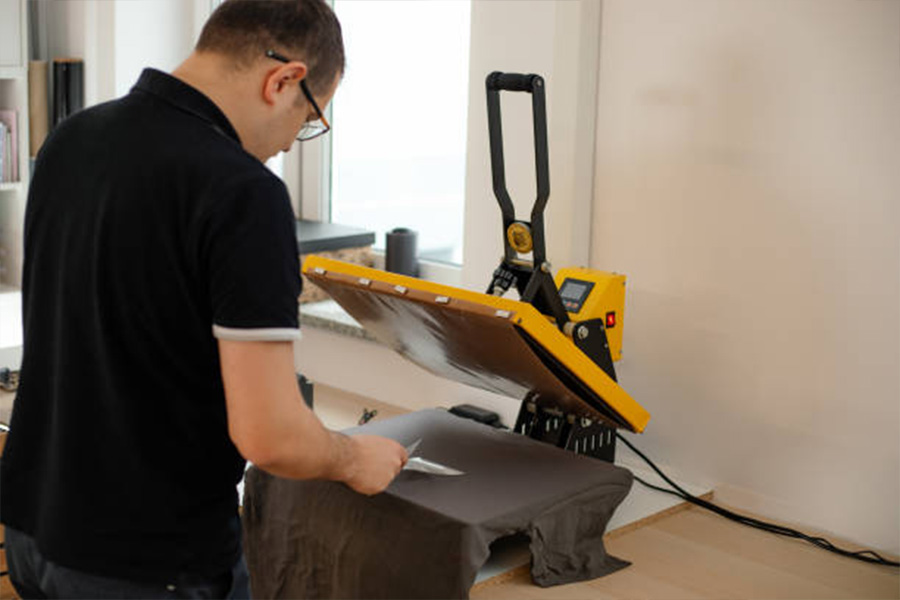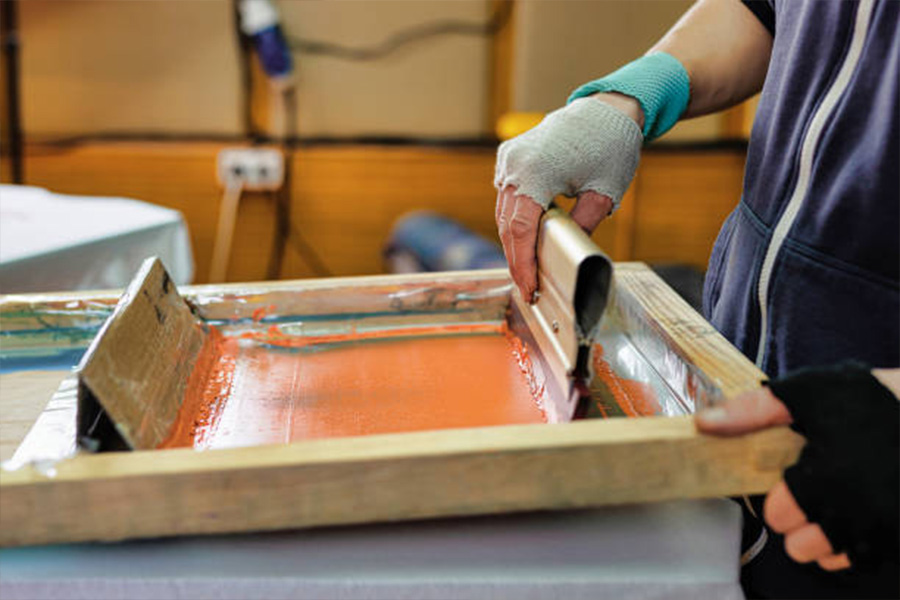Heat transfer and screen printing are modern methods used to decorate T-shirts. Even though the two do the same job perfectly, the final results differ. The best method will depend on several factors, including budget, quality, design, and durability.
This article will discuss the main difference between heat transfer and screen printing. Additionally, it will look at how each of the two methods works and their pros and cons.
Table of Contents
What is heat transfer
What is screen printing
Difference between heat transfer and screen printing
Conclusion
What is heat transfer?
Heat transfer printing encrypts designs onto fabrics or other objects by use of high temperature subjected to vinyl created on the object.
How heat transfer works

The heat transfer process uses a heat transfer vinyl to create designs on garments. Heat transfer vinyl has various textures and colors with an adhesive coating. The adhesiveness is activated when exposed to high temperatures and permanently attaches the vinyl to the fabric.
Vinyl transfer cutouts are created using computer programs. They are then sliced and shaped by an electronic cutting machine. The cut-out is arranged on the fabric and subjected to a heat press that activates the adhesive on the back of the vinyl. Sealing happens when vinyl and fabric are pressed between two heated plates.
Pros
– It requires a low start-up cost because of the few materials needed.
– Buyers can easily make small orders due to the ease of setup.
– The designs are more customized because they are individually encrypted on the fabric.
Cons
– It is not cost-effective when producing bulk orders.
– It does not allow for the layering of several colors, as it only works with one or two colors.
– The method leaves a stiff feel on the fabric.
What is screen printing?
Screen printing creates images or patterns by forcing ink onto fabrics through a screen of fine material.
How screen printing works

This process creates raised designs on garments by spreading ink on a mesh screen and laying it over a stencil. The ink is pushed through the stencil while creating the desired patterns on the fabric. This print is easily created involving arts, plastisol ink, and crafts supplies.
Commercial bulk printing buyers use large screen printing machines holding screens and multiple arms to produce multi-colored designs. The finished screen print design product is thick and has a raised look. It has a single color or few colors due to the difficulty of layering one stencil on top of another. However, with the right equipment, buyers can create the desired outcomes.
Pros
– It creates crisp, rich, and high-quality designs.
– It leaves the fabric feeling soft rather than stiff.
– The prints are long-lasting and do not wear easily.
– It creates bulk products at a cheaper cost.
Cons
– It is quite expensive due to the lots of equipment and supplies used.
– It only works well when printing in bulk.
Difference between heat transfer and screen printing
1. Durability
Screen printing will last longer than heat transfer. Vinyl is decent in outlook but fades and cracks eventually. Screen print soaks the ink into the garments, while heat transfer designs remain on the surface of the garments. Therefore, the plastisol ink rarely peels, fades, or cracks over time.
When the fabric is roughened, like in washing, the vinyl begins to thin and gets damaged fast. It is advisable to wash the printed garments inside out. This protects the design from the tumble and rough, giving them a longer life.
2. Cost

In general, screen printing proves to be more cost-effective compared to heat transfer. Buyers can reuse the set-up screens multiple times to produce many shirts at a lower cost than heat transfer designs.
Individual supplies like vinyl used on heat transfer machines are cheaper than plastisol ink and other chemicals used in screen printing. However, heat transfer creates one or two products at a lower cost, while screen printing saves more in creating products in bulk.
3. Speed
When it comes to speed, a buyer can create several designs using heat transfer faster while still setting up a screen print. However, when a screen print setup is complete, buyers can print quickly in bulk to achieve more output than the heat transfer method. In conclusion, heat transfer is more convenient for quickly creating a few products, while screen printing is faster for production in bulk.
4. Difficulty
Depending on the desired design and complexity of the print, it is much easier to use a heat press than create a screen print. Screen printing offers a slightly better quality design, but vinyl is still the easiest option because of the setup method.
Heat transfer requires minimal setup. The design is passed to the electronic cutter, where the vinyl is arranged on the garment using transfer paper. It is sealed inside the heat press within the correct amount of time. On the other hand, many materials and elaborate equipment are required to achieve a professional outcome on the screen print setup. It also consumes more time to prepare the setup.
5. Quality

The argument about what method offers better quality and more vivid colors ends with a preference for screen printing over heat transfer. This is because it is easier to layer colors in a screen setup than in heat transfer.
Screen printing gives room for realistic images, complex designs, and layered colors. Depending on the ink of choice, heat transfer shows quality on light-colored garments, while screen printing is reliable on dark and light garments.
6. Flexibility
Heat transfer is less flexible than screen printing because using more than one ink is challenging. A buyer needs to create complicated stencils on the screens to make complex images, which can be done easily on screen printing.
Conclusion
Having explored screen printing and heat transfer, buyers can make the correct choice based on their particular needs. Both methods offer solutions to achieve the desired designs on fabrics or other products. It all depends on what’s important for the buyer’s target audience and what they intend to achieve. To acquire quality heat transfer and screen printing equipment, visit Chovm.com.





 Afrikaans
Afrikaans አማርኛ
አማርኛ العربية
العربية বাংলা
বাংলা Nederlands
Nederlands English
English Français
Français Deutsch
Deutsch हिन्दी
हिन्दी Bahasa Indonesia
Bahasa Indonesia Italiano
Italiano 日本語
日本語 한국어
한국어 Bahasa Melayu
Bahasa Melayu മലയാളം
മലയാളം پښتو
پښتو فارسی
فارسی Polski
Polski Português
Português Русский
Русский Español
Español Kiswahili
Kiswahili ไทย
ไทย Türkçe
Türkçe اردو
اردو Tiếng Việt
Tiếng Việt isiXhosa
isiXhosa Zulu
Zulu